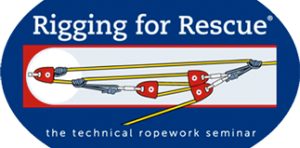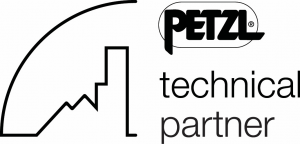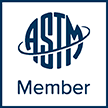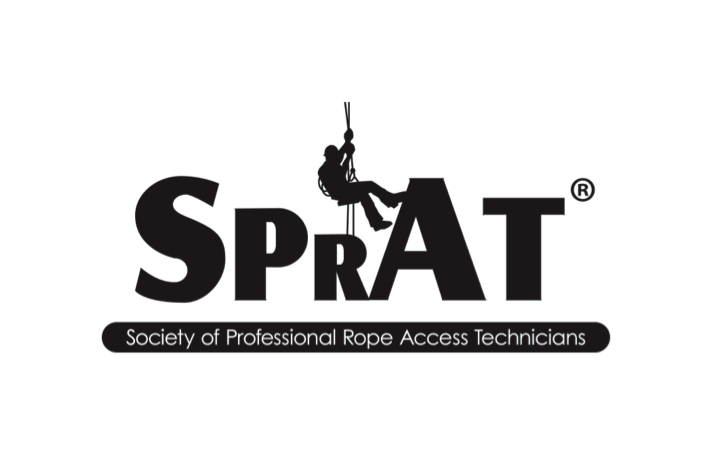Ouray Ice Park is Open!
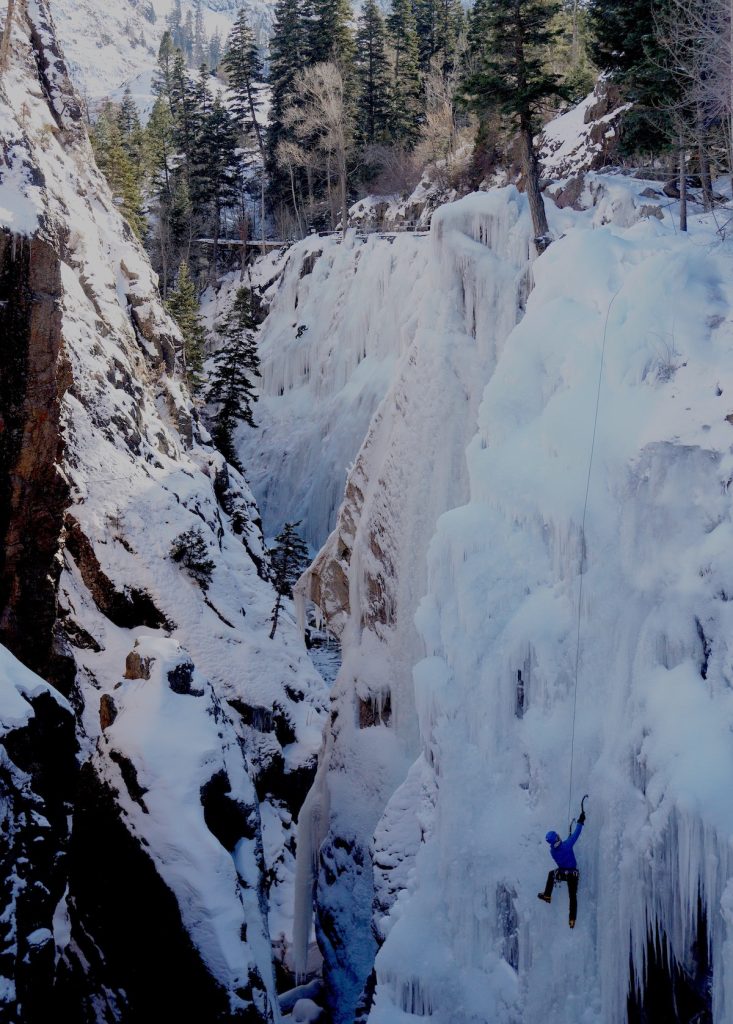
The winter weather gods have seen fit to deliver optimal ice-making conditions for the Ouray Ice Park ice farming efforts. Cold temps allowed the Ice Farmers to make ice 24/7 for the past week. Couple that with an abundant water source – that can be attributed to last year’s big winter of snowfall topping off the City of Ouray’s aquifer – and you find yourself waking up on 20 December with more ice in the Ouray Ice Park than we have witnessed in many, many seasons. It was pretty satisfying to drop into Pick of the Vic for first swings on beautiful, blue ice. Ice climbers rejoice! It is happening this year in the Ouray Ice Park. Please consider joining us for one of our Waterfall Ice Climbing and Rescue Workshops. Ice climbing movement skills, companion rescue techniques, and team-based rescue approaches utilizing the unique medium of waterfall ice. Get some!
Early Season Ice Climbing
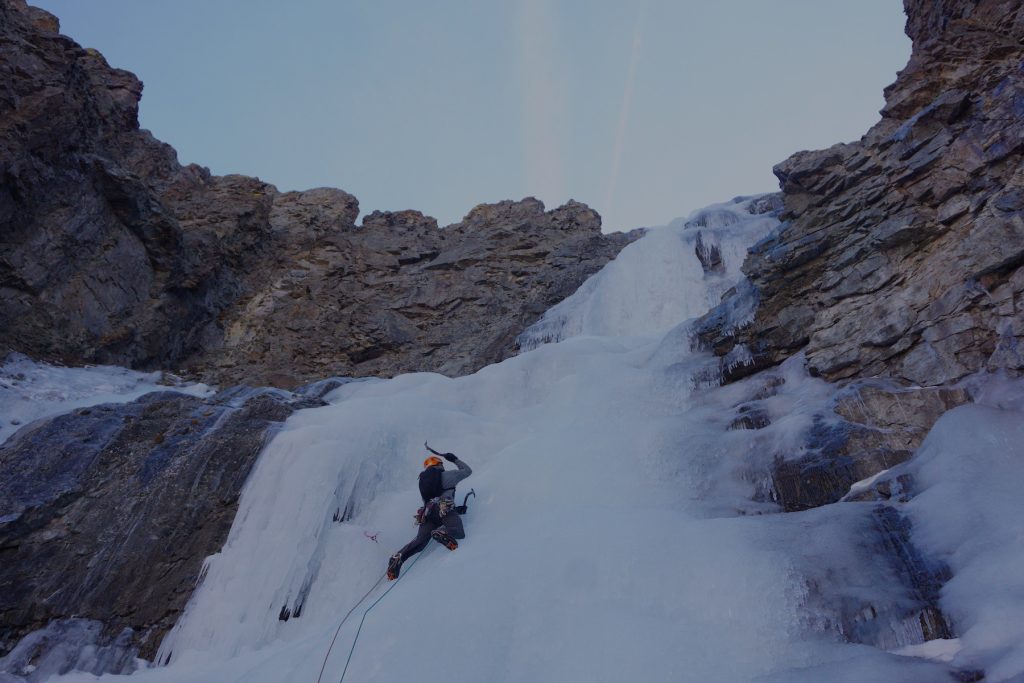
Fellow RfR instructor Tim Pasek and I got out for some November ice climbing in the San Juan’s a few days ago. Southwest Colorado received a very cold blast of arctic air in the early part of October that contributed significantly to bringing in the high country ice climbs – about a month earlier than we are normally used to seeing. Tim and I selected Highway to Hell as our climb du jour. The climb is located to the right (south) of its more famous neighbor, Stairway to Heaven. Stairway itself was looking a bit anemic on the bottom pitches. Highway to Hell was quite the opposite. It is in fat condition right now. So much so that a name change should be considered: “Sticker, Blue Goo Highway.” The absence of snowfall for the past three weeks has delivered a sweet window for getting on some normally high hazard climbs like HTH. Here’s to winter!
ITRS 2019
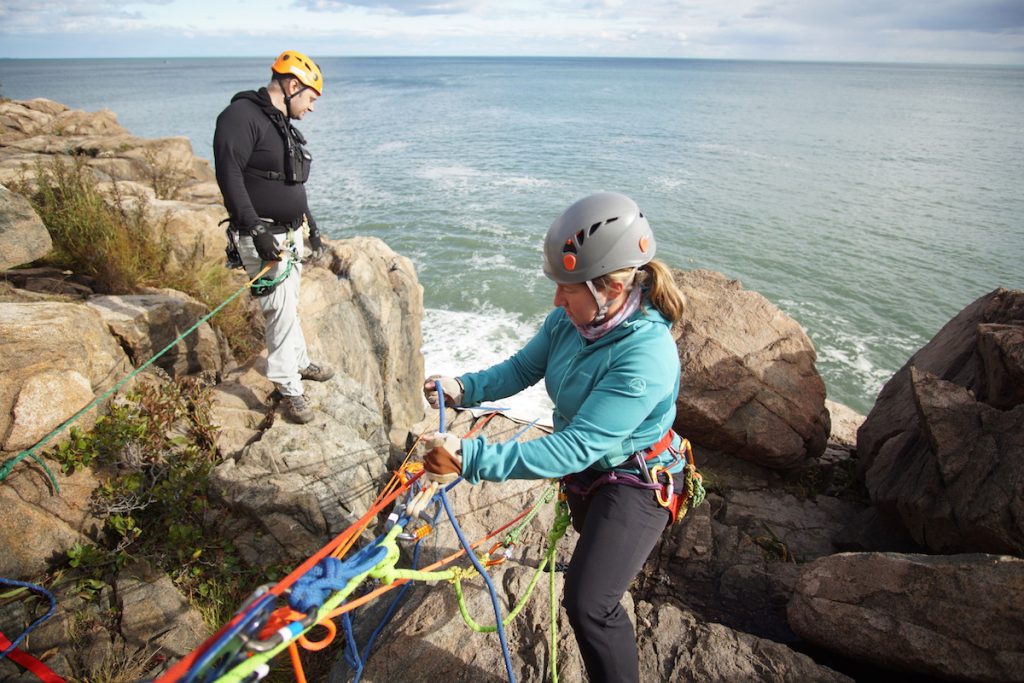
We just returned from the annual International Technical Rescue Symposium (ITRS) held in Albuquerque, NM. Rigging for Rescue has been attending and presenting at this event since its infancy in 1986 (NATRS at that time). The symposium is a gathering of around 170 attendees to discuss, dissect, and debate all things rescue-related. Having personally attended every ITRS save for one over the past 18 years, I left the 2019 version feeling like it was the best I had witnessed for the past decade. There were many excellent presentations over a broad mix of topics. It was inspiring to see how much effort others are putting into both critical thinking and testing to better our collective understanding of the systems we tie into on a daily basis. Rigging for Rescue principals Mike Gibbs and Kevin Koprek both presented: VT Prusiks for Rescue Belays (Gibbs) Human Factor Considerations: Rope Systems and Device Selection (Koprek) The new research on the VT Prusik has been an ongoing project of Rigging for Rescue’s dating back to our initial testing on that device presented to ITRS in 2014. The ITRS 2019 research paper, abstract, and video clips are now viewable on our website at: https://staging4.riggingforrescue.com/vt-prusik-rescue-belays/
VT Prusik for Rescue Belays

VT Prusik for Rescue Belays – Abstract Rope rescue teams typically operate redundant two-rope systems with inclusion of a failsafe mechanism for fall arrest. Examples include the MPD, 540° Rescue Belay, Petzl I’D, and Tandem Prusiks to name a few. Teams operating in remote environments with longer ingress/egress distances often favor lighter weight, multi-purpose systems and devices as part of their overall mission profile. In 2013, Rigging for Rescue began examining the Bluewater VT Prusik (configured as a Schwabisch ‘Max over One’ hitch) as an alternative to the Tandem Prusik Belay. In 2014, this author presented at ITRS quick look tests considering a variety of Aramid fiber friction hitches and configurations. Initial results for the VT Prusik were favorable and thus additional testing was warranted. Further testing was conducted in 2017 and 2019. The purpose was to critically examine the capabilities and limitations of the VT Prusik as a device suitable for managing fall arrest on a rope rescue system while lowering or raising a 200kg mass. Since the 2014 ITRS presentation, three primary areas of inquiry include: The British Columbia Council on Technical Rescue – Belay Competence Drop Test Method (BCCTR BCDTM) Human operators using a snug top-rope while lowering Raising scenarios with a snug top-rope and human operators Additionally, tests were conducted with the tensile testing machine on drop test sample ropes and Prusiks. The laboratory style tests (i.e. BCCTR BCDTM) demonstrated favorable results that were within industry acceptable performance criteria for: Maximum arrest force Stopping distance Integrity of the device and rope system The human operated tests we conducted produced results that compared favorably to other tests we have either witnessed or been made aware of utilizing Nylon TPB (with human operators). Mechanical devices with purpose-built fail-safe mechanisms will undoubtedly prove more reliable for fall arrest versus a user-configured system such as Tandem Prusiks or the VT Prusik. However, for teams with specific mission profiles that place a high value on lightweight, multi-purpose equipment, the single VT Prusik configured as a Max over One, appears to be a superior alternative to the traditional Nylon Tandem Prusik Belay. VT Prusik for Rescue Belays For more information, check out Rigging for Rescue’s video testing samples.
The Great State of Maine
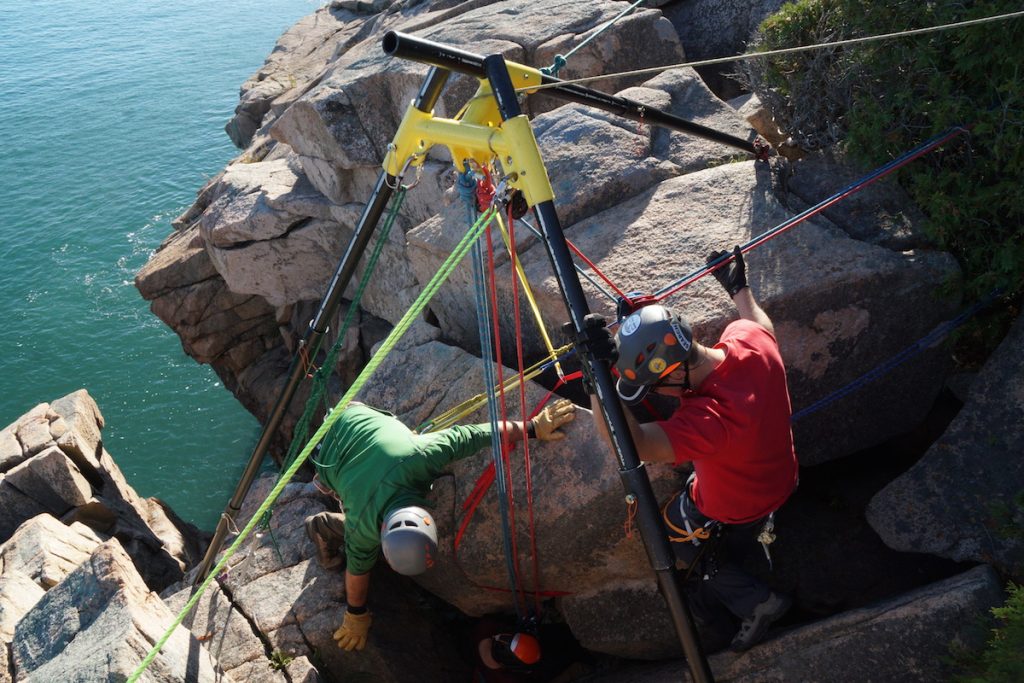
[one_full last=”yes” spacing=”yes” center_content=”yes” hide_on_mobile=”no” background_color=”” background_image=”” background_repeat=”no-repeat” background_position=”left top” hover_type=”none” link=”” border_position=”all” border_size=”0px” border_color=”” border_style=”solid” padding=”” margin_top=”” margin_bottom=”” animation_type=”0″ animation_direction=”down” animation_speed=”0.1″ animation_offset=”” class=”” id=””][youtube id=”2kUZrF7iObs” width=”800″ height=”550″ autoplay=”no” api_params=”” class=””][/youtube][fusion_text]We recently returned from our biennial visit to the spectacular coast of Maine on Mount Desert Island in Acadia National Park. The training event brings together the handful of SAR teams that perform high angle rope rescues in the state. Given the small size of the state, it is not uncommon for the various Maine SAR teams to respond to mutual aid requests on more technical calls. The opportunity to train together every other autumn provides for great discussions on risk management decision-making, systems & devices, as well as agreed upon terminology for command and control. At the time of our previous visit, we identified a unique geological feature on one of the sea cliffs in Acadia. That discovery was filed away and we made plans to utilize it at the next training. We dubbed the feature the Crack of Doom. The approach to the fissure was unremarkable and you would not have suspected there was a narrow 25m slot going right down to the Atlantic. There was even an existing social trail frequented by visitors that passed only 4-5m uphill from where the crack originated, yet offered no indication of its existence. Apparently there was a fatality in recent history whereby a visitor slipped and fell into the slot while approaching too close. It seemed to be a worthwhile ropework objective. We spanned the slot with an artificial high directional device and lowered a participant into place on a 2-rope system to act as the stranded Subject. The ropework puzzle was solved using some confined space techniques such as lowering the rescuer on parallel pulley systems for the eventual pickoff. We secured the Subject on a small jigger system to allow the Attendant the ability to easily adjust their relative position during the raise. Additionally, the vertical stagger of the Attendant and Subject allowed the rescuer to clear the confined space entry hole at the top first and then stop the two-rope raising system; from there, the rescuer raised the Subject through the hole using the jigger system and did not have to rely on commands to move the Subject through what was a very narrow slot. It was a great exercise requiring very precise rope alignment as well as team coordination. It is always a privilege to travel to the great state of Maine for rope rescue trainings and we look forward to the next visit in 2021. [/fusion_text][/one_full][separator style_type=”none” top_margin=”” bottom_margin=”” sep_color=”” border_size=”” icon=”” icon_circle=”” icon_circle_color=”” width=”” alignment=”” class=”” id=””]
Summer wrap-up
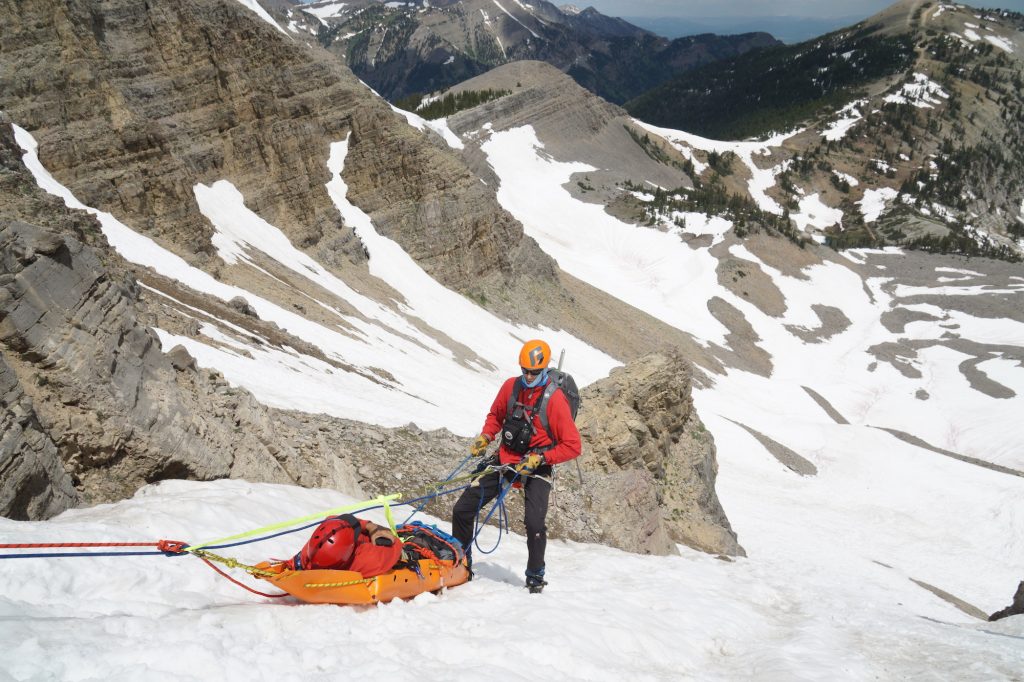
The summer RfR season proved to be a whirlwind. We traveled near and far working with a variety of rescue teams from very different backgrounds and mission profiles. Continued areas of participant interest included: pros and cons of Two Tensioned systems and how/when/why to apply them effectively use of the VT Prusik in rescue systems as both a rope grab and a fall arrest device optimization of the overall team and managing human factors Rigging for Rescue principals Kevin Koprek and Mike Gibbs are slated to present new information to the rescue community on the above topics at the upcoming International Technical Rescue Symposium to be held in Albuquerque, NM in early November. For several years now, we have been conducting drop tests incorporating live device operators. These tests have included a variety of devices, systems, and rope tensioning approaches including the VT Prusik, ATCs & Scarabs with Prusik backups, and the MPD. We look forward to sharing the results.
Black Canyon NPS – Stoned Oven SAR
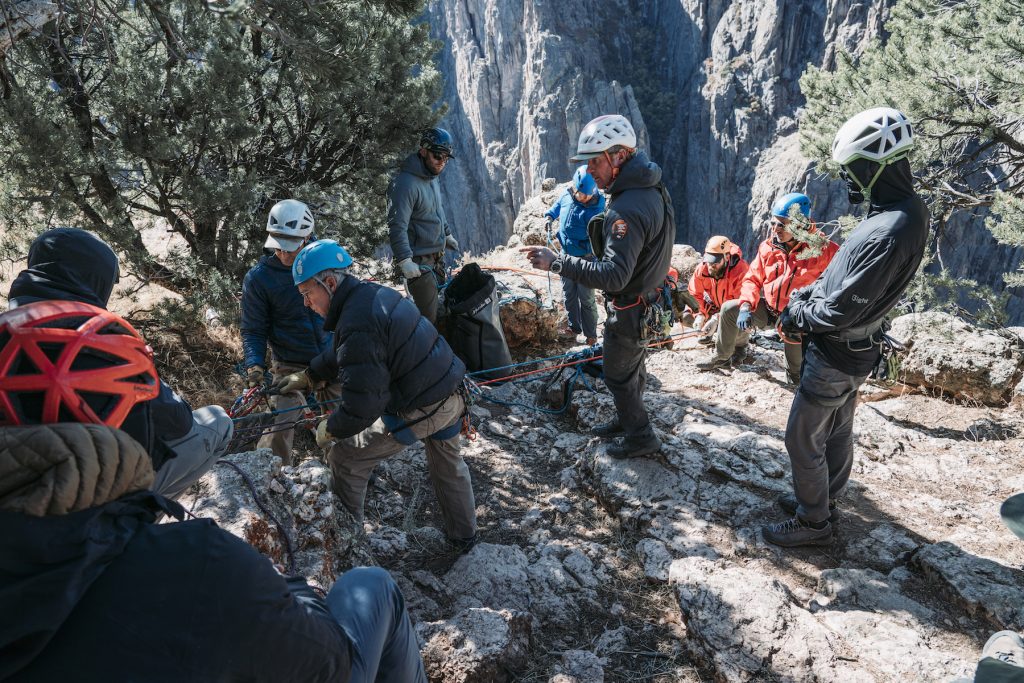
On Saturday, October 5, a call came in from the North Rim ranger station that there was a SAR in the works. A climber on the 5.11 route Stoned Oven on North Chasm View Wall had taken a leader fall and injured (broken) their ankle after striking a ledge. They and their partner were self-rescuing via rappel down several pitches to the base of the route. The NPS was calling for assistance from their mutual aid teams in the area for what would be a 500m lower-to-raise operation the next morning. Four of us from Ouray Mountain Rescue responded to the call. We briefed the plan at 0600 on Sunday, October 6. The weather was cool and clear with high pressure forecasted. Rigging commenced just before 0800 and the patient and attendant were topside by 1400. Approximately 24 individuals from the NPS, Black Canyon volunteer SAR, Crested Butte SAR, and Ouray Mountain Rescue participated in the rescue. The Black Canyon of the Gunnison offers some of the biggest walls in the USA. Climbing and rescue in the Black is a serious endeavor. The big SAR calls in the Black are surprisingly infrequent, but when they come they end up being the ultimate expression of the craft of technical rope rescue. In Europe, they would not even consider such an approach. They would fly in a helicopter. It was a super proud effort by all involved. The patient and partner were incredibly grateful. It was a privilege to play a part. Photos courtesy of Xander Bianchi and Mike Gibbs
Self Rescue and Small Teams Response Workshop
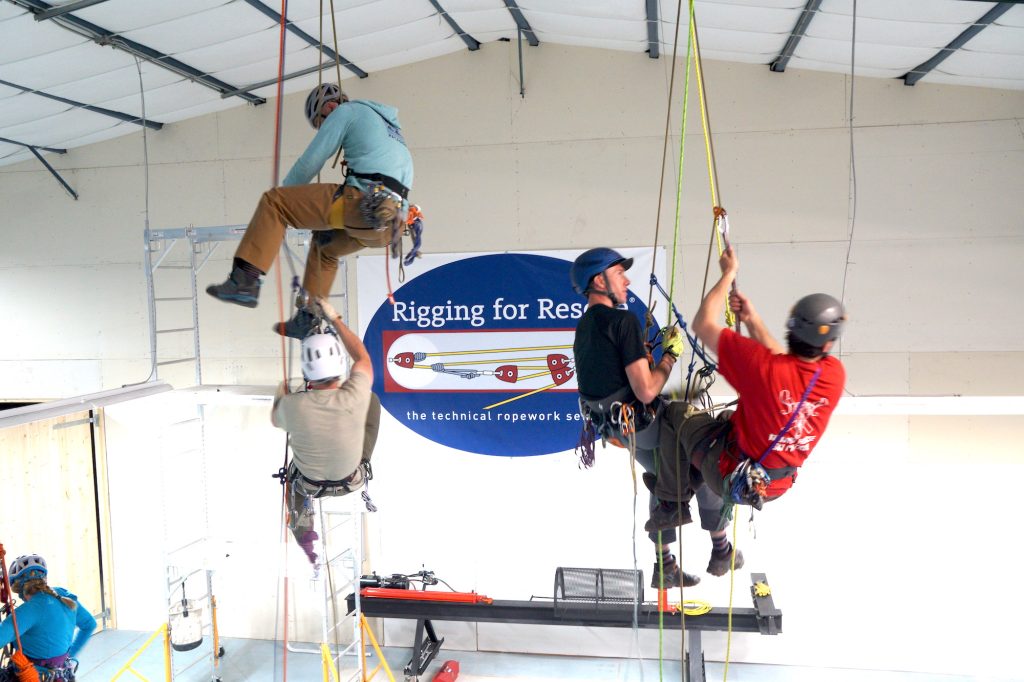
We recently wrapped up one of our semi-annual Rigging for Rescue Self Rescue and Small Teams Response workshops. For the backcountry trad climber and mountain rescue “hasty team” respondent, it represents just about the best quality material that RfR offers in ropework and rigging. Our new indoor training facility provides an excellent venue for honing the details of some of the counter-balance partner rescue techniques. We then apply those in the field on realistic training scenarios such as a multi-pitch ascent, lead climber pickoff, and then 2-rope descent with station transitions. No specialized devices are used during the week – only specialized techniques. All of the problem-solving is conducted with ATCs, friction hitches, mechanical advantage, and tension transfer systems. In addition to the partner rescue scenarios, we also covered lightweight team-based pickoffs and litter scenarios with minimal resources. One of the highlights for the group was the surprise Tyrolean Traverse over the raging Uncompahgre Gorge to access the multi-pitch climbing route. Our next Small Teams offering is scheduled for 30 Sept – 4 Oct in Ouray.
Grand Teton NPS
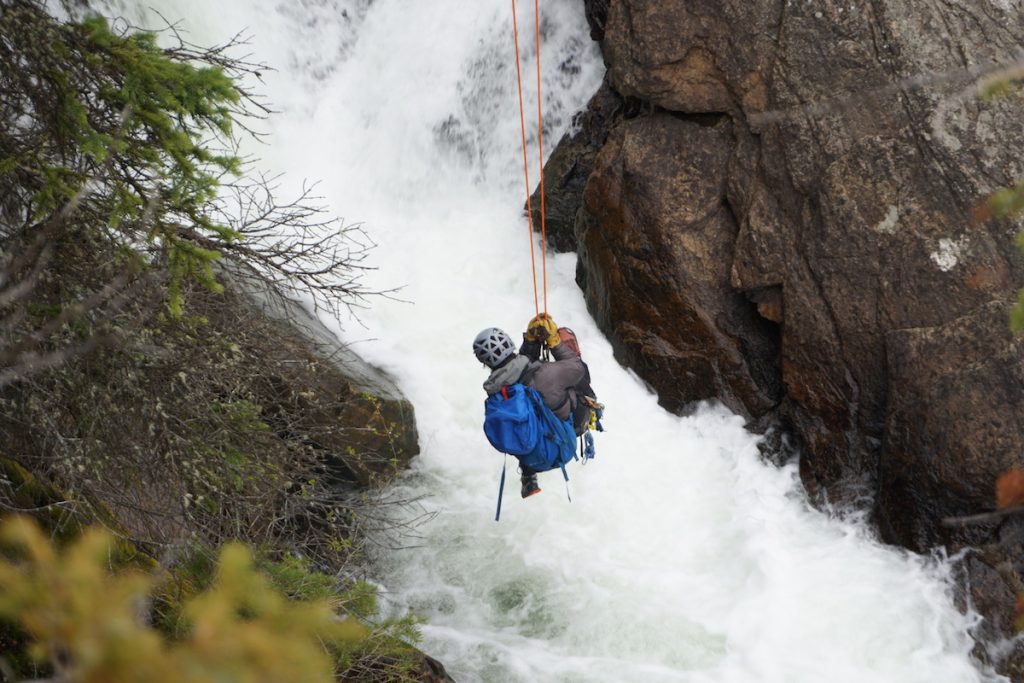
Conditions in the Northern Rockies were cool and wintery this past week during our training with the Jenny Lake climbing ranger cadre at Grand Teton National Park. After a review of system components/devices we focused on some of the more challenging rope rescue problem-solving missions such as highlines and multi-pitch. Both techniques require excellent logistics and communication to be performed well. The multi-pitch exercise employed a mixture of BC Pickoff, San Juan Pickoff, and Dual Tension Systems.
Mt Rainier NPS
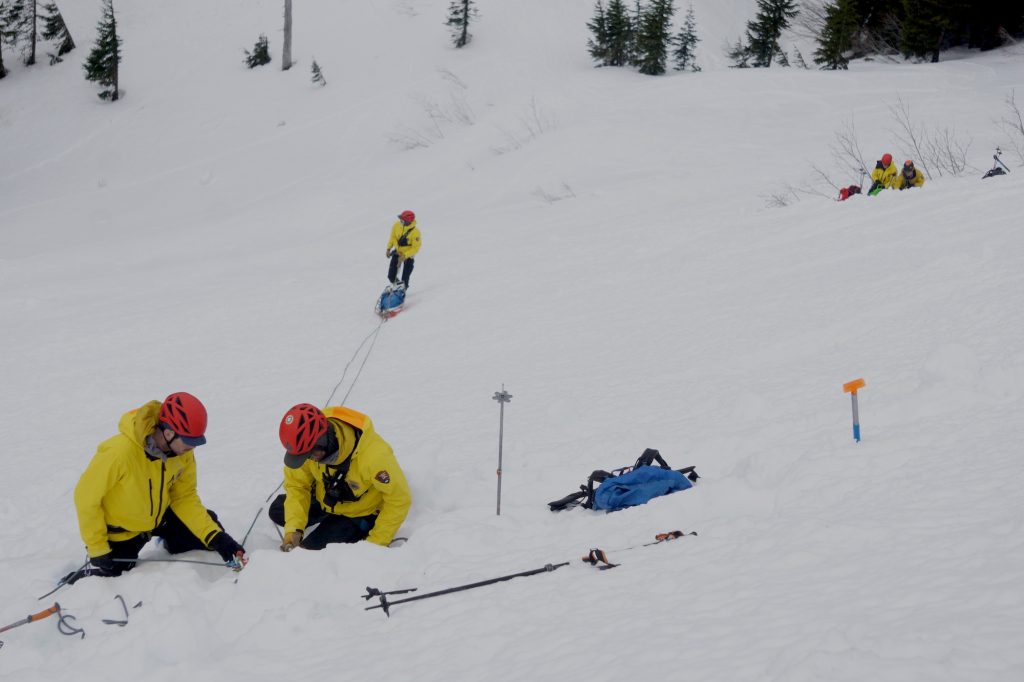
The month of April had us visiting a frequent port of call – Mt Rainier National Park. The climbing ranger cadre at Rainier responds to similar missions as the Denali NPS rangers – crevasse falls, hypothermia, altitude illness, and the myriad of others means of being incapacitated in the high mountain alpine environment. We worked on some of the rigging/rescue basics as per usual, but then stepped into some more advanced techniques for moving rescuers and patients in high consequence ground. The team executed a Kootenay Highline System with the English Reeve variation over a narrow gorge. The English Reeve is an elegant aerial ropeway suspension system that can control the live load in two planes. Additionally, we trained on a multi-pitch pendulum traverse for moving a patient both down and across a steep snow/ice slope. The technique involves thoughtful placement of the next station in order to assist the litter attendant in their sideways travel while safeguarding them from sliding backwards. There are numerous considerations such as multi-directional anchoring techniques. It was a great week of training working with a very capable and high caliber group of respondents.
